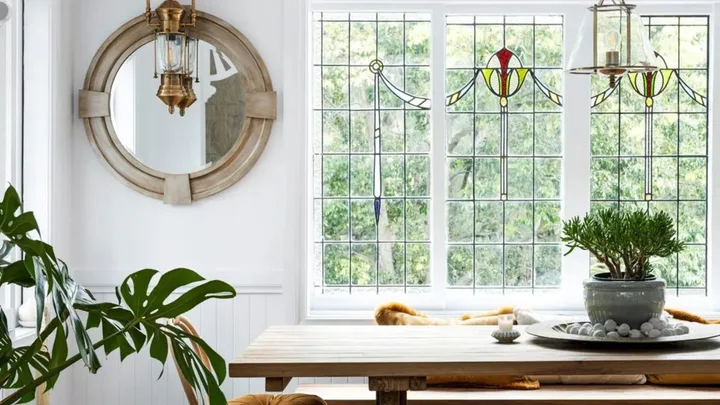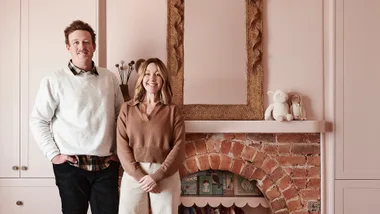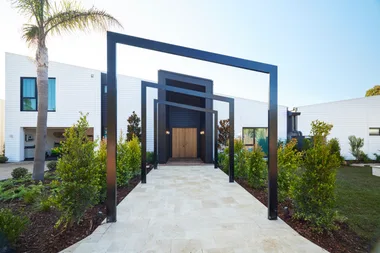Stained glass windows display a delicate, time honoured art of yesteryear.
More than just a sum of their parts, each leadlight window is handmade and takes loving care and the skill of an artisan to produce, protect and restore, with architectural designs including them in sash, bay and entryway windows — both indoors and out.
The history of stained glass windows
The history of stained glass dates back to Ancient Egypt, when people would create objects, such as coloured beads, out of stained glass. The ancient Romans also uses glassmaking technology to create some of the first stained glass windows for their homes.
However, the popularity of stained glass windows really came in the medieval period, when it began being used to depict Biblical stories in churches and cathedrals throughout Europe. These impressive stained glass windows are still what many of us associate stained glass with today.
It took until the early 20th Century for stained glass to make its way back into domestic architecture, with the Art Nouveau movement and artists such as Louis Comfort Tiffany fuelling a new-found appreciation of the glass as an interior design feature.
It’s not uncommon for older Australian homes to feature stained glass from the Art Nouveau, Art Deco and Arts and Craft movements.
The difference between leadlight and stained glass windows
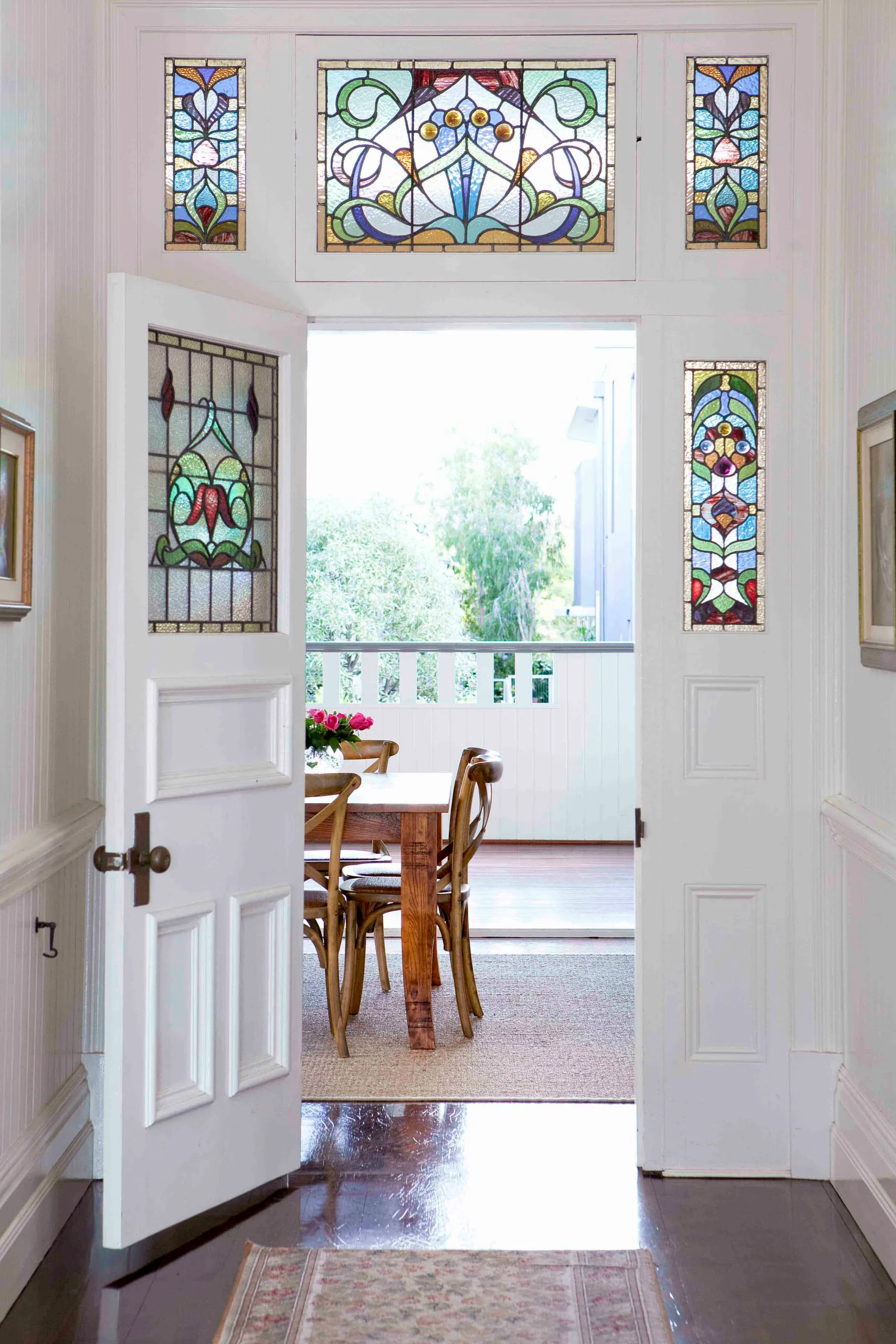
These days, the terms leadlight windows and stained glass windows are used interchangeably, but that wasn’t always the case.
Traditionally, leadlight was used to refer to leaded glass without colour, while stained glass refers to those with colour. While technically stained glass windows are a type of leadlight window, industry experts may still refer to the two like this to distinguish them from each other.
Getting stained glass windows in your home
If you’re lucky, your home may have retained beautiful, original designs intact, or in a condition good enough to be matched or duplicated. Alternatively you can have your own design custom-made by a licensed glazier.
The lead ‘cames’ that divide small panes of glass also hold them in place. These, together with the decorative glass pieces, can be restored, usually involving the removal of the window, which is taken away for studio repair. Search online for a licensed leadlight glazier near you.
Second-hand windows in their original frame can also be purchased from restoration yards. However, the selection process is important.
When purchasing antique or second-hand stained glass windows, make sure that you do the following:
- Find out the age of the window
- Check the glass for damage
- Give it a wobble to test its structure and quality
- Don’t be afraid to ask the salesperson questions
How to clean stained glass windows
The often uneven and textured surface of leadlight windows can pose a challenge to cleaning them.
Stained glass windows are also often a little more delicate than your ordinary glass, meaning that you have to careful about the cleaning solution that you use.
With all leadlight windows, it’s best to avoid cleaning solutions with alcohol or ammonia, and stick to a natural, non-toxic cleaning spray. This is because the solder holding the window together can easily become damaged when exposed to toxic cleaning solutions. Likewise, it’s best to avoid dish soap and vinegar.
Instead, simply use warm water or, if you require something hardier, an ammonia-free soap.
- Spray your cleaning solution onto a cloth — never directly onto the window.
- Wipe the larger areas as gently as you can.
- Use a cotton bud to get into the smaller areas.
- Dry thoroughly with a microfibre cloth.
In most cases, minimal cleaning is recommended for stained glass and leadlight windows, with a light wipe down or dusting more suitable.
Stained glass window inspiration
The front door

From its location above the front door, this stained glass window adds to the heritage charm of this 120-year-old Toowoomba property.

(Photography: Brigid Arnott / Styling: Lisa Hilton)
A more contemporary style of stained glass fits in effortlessly with the bohemian energy of this cottage in Avalon.
Living areas
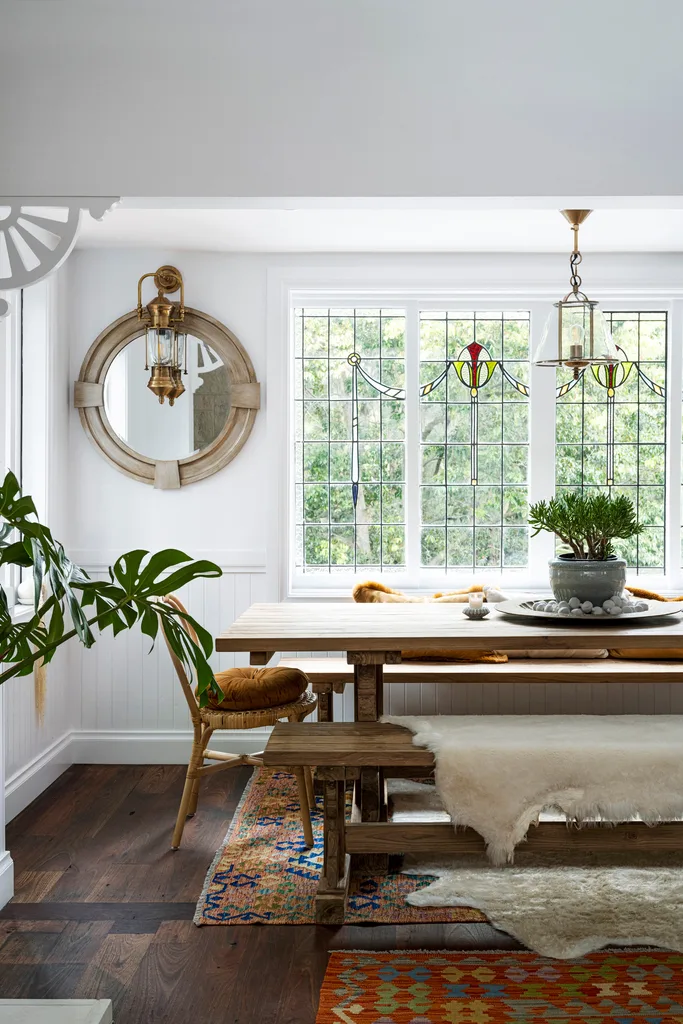
(Photography: Brigid Arnott / Styling: Lisa Hilton)
The Avalon cottage’s delicate stained glass pattern also makes for a grand design feature in the sunny dining room.
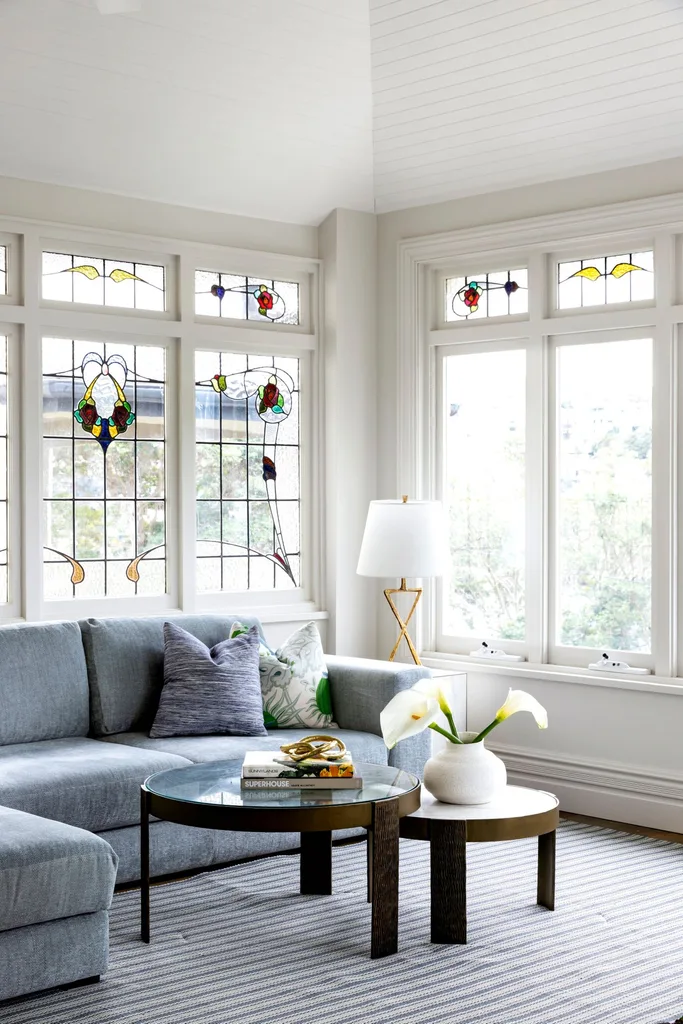
In a similar way, a large stained glass window adds character to this sunroom on Sydney’s Lower North Shore.
Hallways
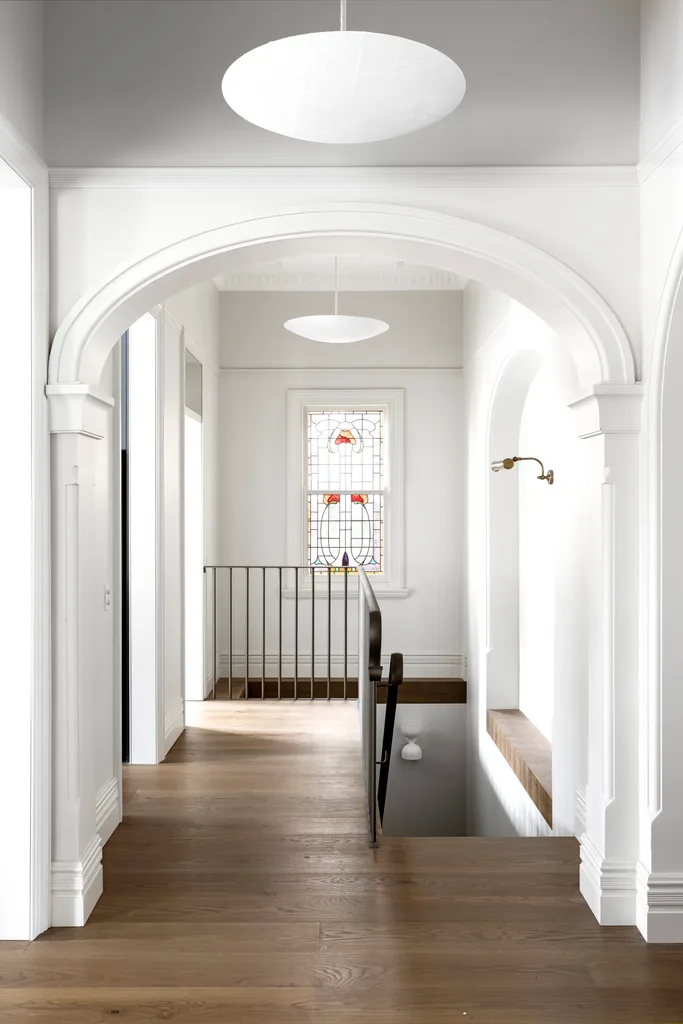
The Sydney property also features a statement stained glass window at the top of the staircase on the home’s second level.
Window seats
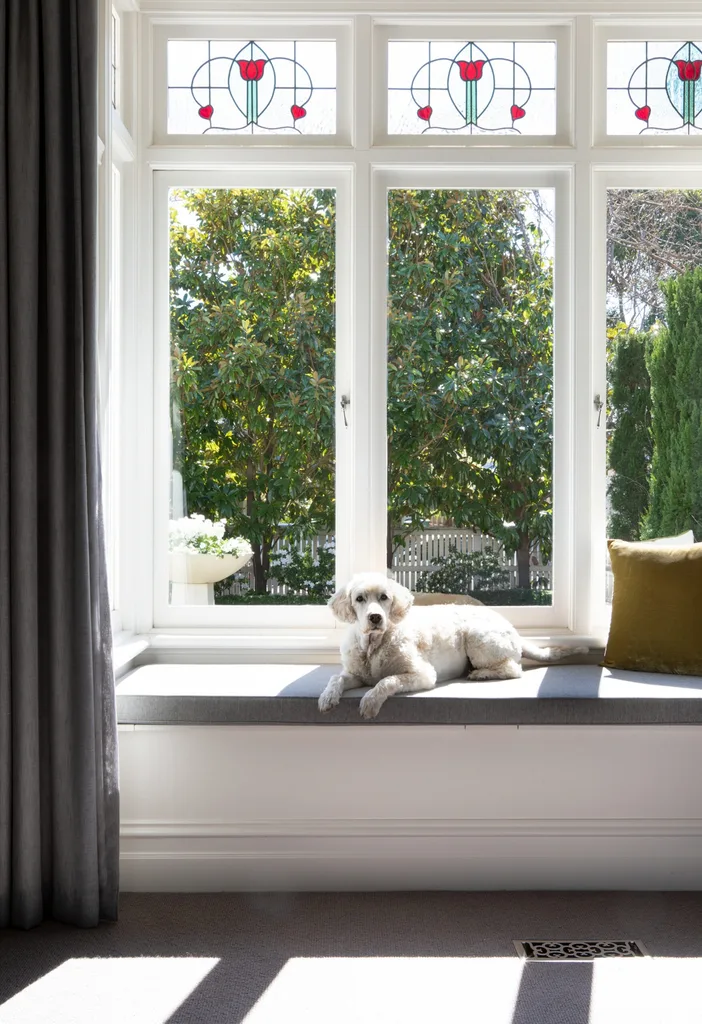
This Melbourne home embraces its elegant heritage features with stained glass windows above the window seat.
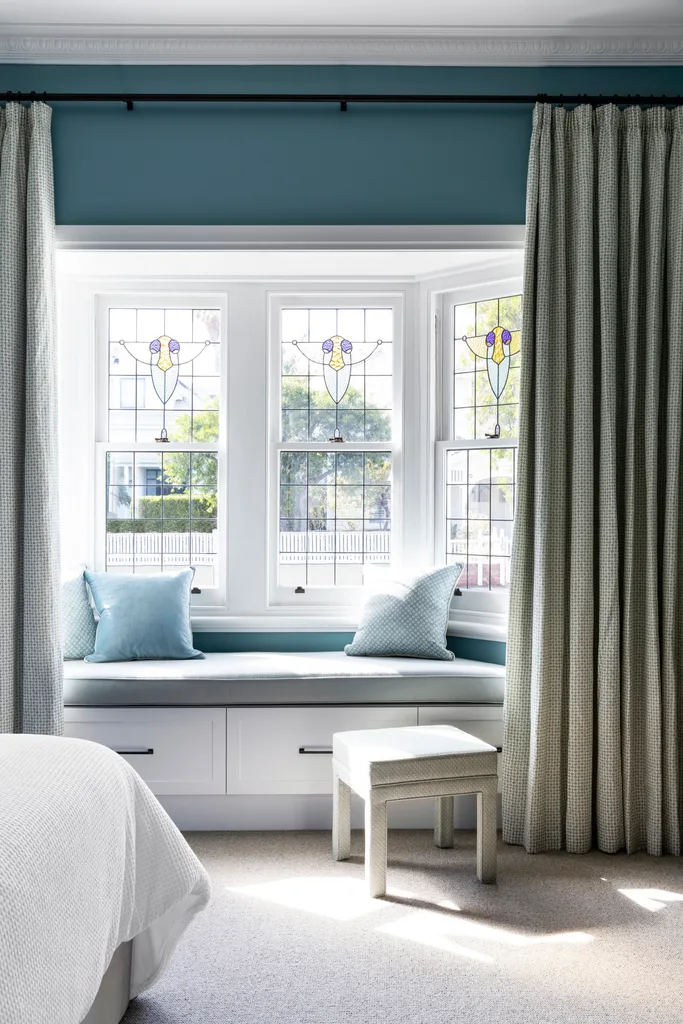
In a similar way, these leadlight windows add to the charm of the window seat in this Melbourne bungalow.
